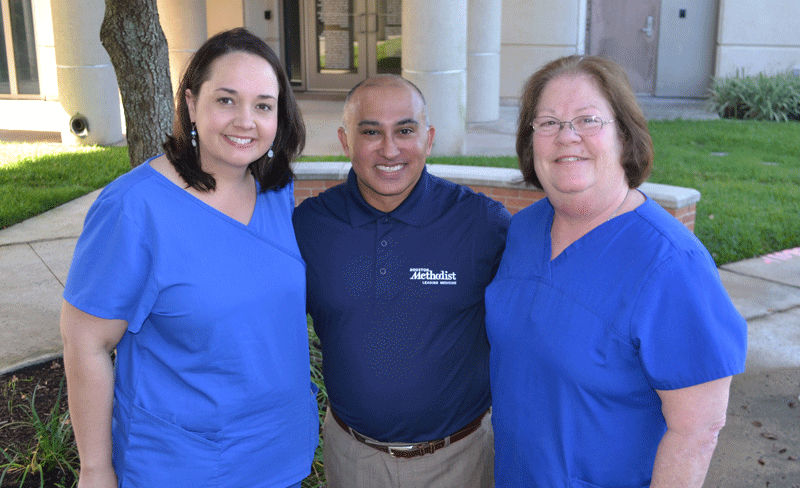 HMSL is the first in Fort Bend County to use an innovative biotherapy involving fly larvae to save a patient’s infected limb that otherwise would have been amputated.
HMSL is the first in Fort Bend County to use an innovative biotherapy involving fly larvae to save a patient’s infected limb that otherwise would have been amputated.
The BioBag®, a unique larval therapy, was used to clean dead tissue from a diabetic patient’s severely infected foot and quickly prepare him for a skin graft, saving him from a below-knee amputation. What would have been an 18- to 24-month ordeal — with multiple staged surgeries and significant future risks — was taken care of in a matter of days, allowing the patient to return to his daily routine quicker with full mobility.
“The BioBag actually relies on a very old practice that has been modernized in a unique way,” Dr. Nick Desai said. “The use of larval therapy to debride, or clean, dead tissue from infected wounds dates back thousands of years. The BioBag brings it up to date by providing full containment of the fly larvae within a sealed, easy-to-apply dressing.”
“Larval therapy leaves all healthy tissue intact and allows us to perform a skin graft within a couple of days of treatment,” he said. “In severe cases of infection, larval therapy will actually save the patient’s limb because more conventional therapies would not work in time.”
The larval therapy – introduced in the U.S. in 2015 – has the potential to make a significant positive impact on health care outcomes and costs. The dramatic rise in Type 2 diabetes among Americans has led to a rapid increase in diabetes-related foot ulcers and infections, which can be difficult for patients to detect — since they often lose feeling in their extremities — and treat because diabetes can slow the ability of skin cells to rejuvenate.
